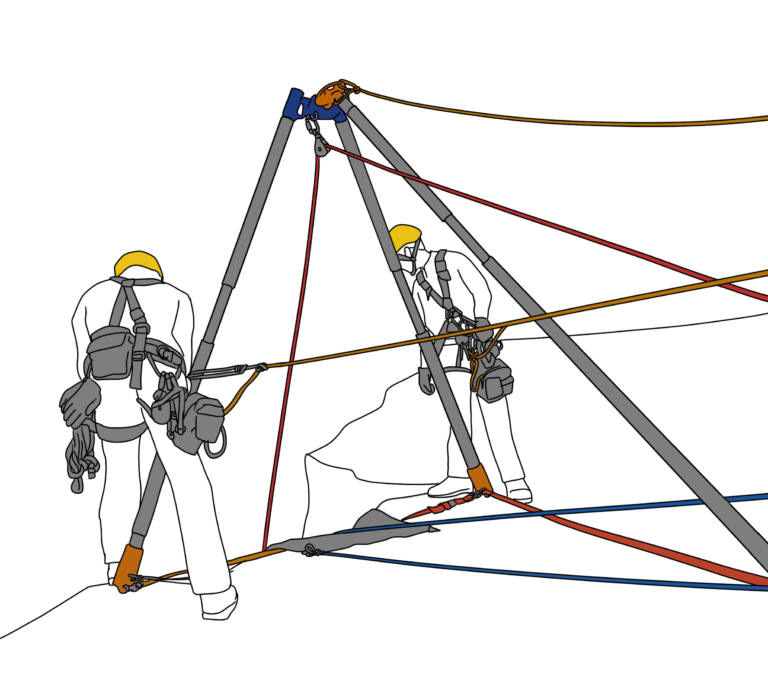High Angle Rescue Techniques Tools and Training
High-angle rescue techniques tools and training stand as a testament to human determination and technical mastery, bringing hope to those stranded in nature’s most perilous terrains or urban vertical challenges. These rescues demand a profound blend of skill, knowledge, and adaptability, often operating on the edge of what is physically and mentally possible. Today, we explore the intricate world of high-angle and low-angle rescues, shedding light on the distinctions, techniques, and equipment that define these life-saving missions.
Understanding High-Angle Rescues
High-angle rescues operate in environments defined by their vertical or near-vertical challenges. From steep cliffs and industrial towers to the faces of urban high-rises, these rescues tackle scenarios where direct access to the victim is obstructed by the terrain. Unlike low-angle rescues, where inclines are gentler, high-angle operations involve sheer drops that require advanced techniques, specialized equipment, and meticulous planning.
Key Characteristics:
- Definition: Scenarios involving vertical or near-vertical obstacles.
- Technical Differences: Greater reliance on advanced rigging, edge protection, and rope systems.
- Challenges: Risks include falling debris, anchor instability, and the physical toll on rescuers operating at extreme angles.
Core Techniques in High-Angle Rescue
Successful high-angle rescues hinge on mastering critical techniques that prioritize safety, precision, and efficiency.
- Edge Management: This technique ensures the safety of rescuers and victims by managing the critical point where the system transitions from horizontal to vertical. Proper padding, anchor placement, and communication at the edge are non-negotiable.
- Lowering and Raising Operations: These lifelines rely on carefully managed systems to move victims to safety. Techniques such as controlled descent and mechanical advantage hauling systems ensure stability and security throughout the process.
- Patient Packaging: Victim security during vertical extractions is paramount. Proper packaging involves immobilizing the victim while ensuring comfort and safety during transport.
Essential Equipment for High-Angle Rescues
High-angle rescue gear forms the backbone of these operations. Each piece of equipment plays a critical role in ensuring success under demanding conditions.
- Harnesses: These provide the necessary support for both rescuer and victim, ensuring a secure connection to the system.
- Helmets: Protecting against falling debris or unexpected impacts is vital for safety in high-angle environments.
- Pulleys and Rope Systems: These facilitate smooth movement, reducing friction and distributing forces effectively during lowering and raising operations.
Maintenance Matters: Regular inspection, cleaning, and testing of all equipment are essential. The reliability of gear can mean the difference between life and death, and rigorous upkeep ensures its readiness for any situation.
Low-Angle Rescue Considerations
Low-angle rescues, though less dramatic in slope, provide the foundational techniques and principles often employed in high-angle scenarios.
Key Points:
- Role: These operations serve as the training ground for advanced rescues, refining skills like anchor setup, patient movement, and system rigging.
- Differentiation: Equipment requirements and force dynamics differ due to the shallower angles but remain critical for safety.
- Integration: High-angle rescues often incorporate low-angle tactics, demonstrating the fluid adaptability required in technical rescue.
Conclusion: Elevating the Art of Rescue
The journey into high-angle rescue reveals the delicate balance between courage, technical expertise, and unwavering preparation. These operations are a testament to the power of human ingenuity and the relentless pursuit of saving lives.
To stay at the forefront of rescue capabilities, continuous learning and advanced training are indispensable. Engage with programs that push the boundaries of your skills, explore innovative techniques, and share your knowledge with the rescue community to strengthen this life-saving network.
Explore these concepts further with Rigging Lab’s Subscription Programs. Whether you’re seeking foundational knowledge or advanced techniques, our comprehensive resources ensure you’re always prepared for the challenges ahead.
Click Here to Learn More About Rigging Lab Subscriptions!
Peace on your days,
Lance










